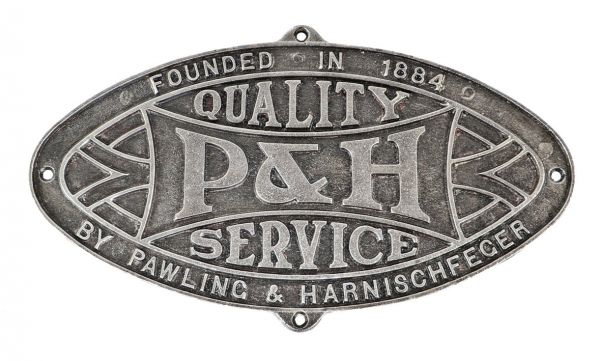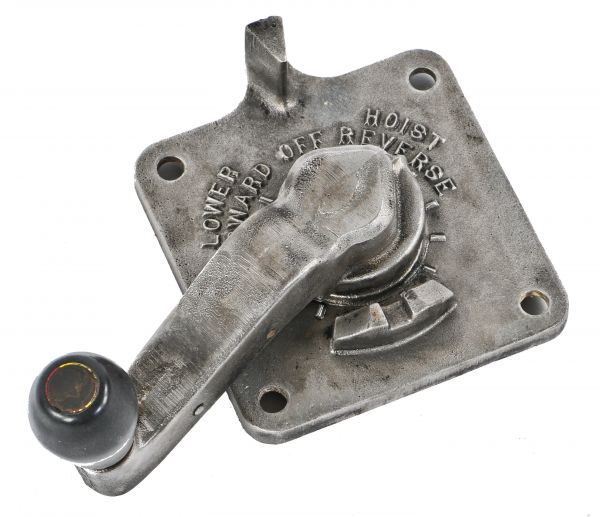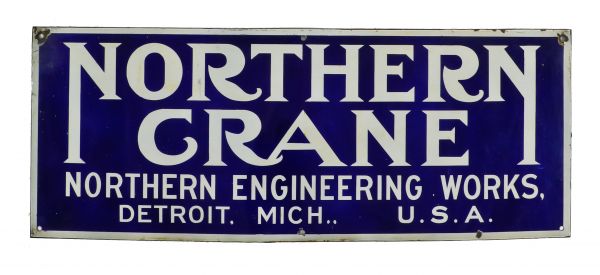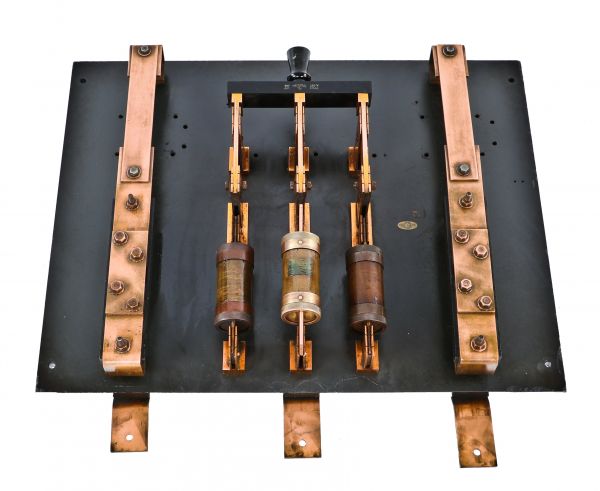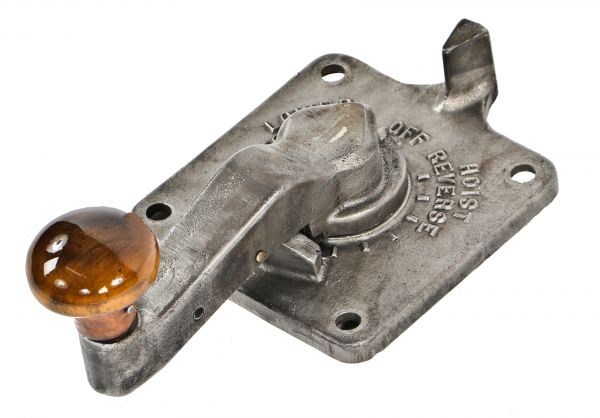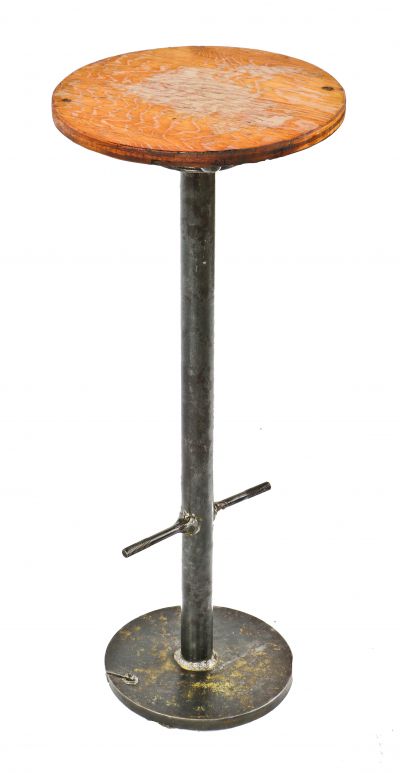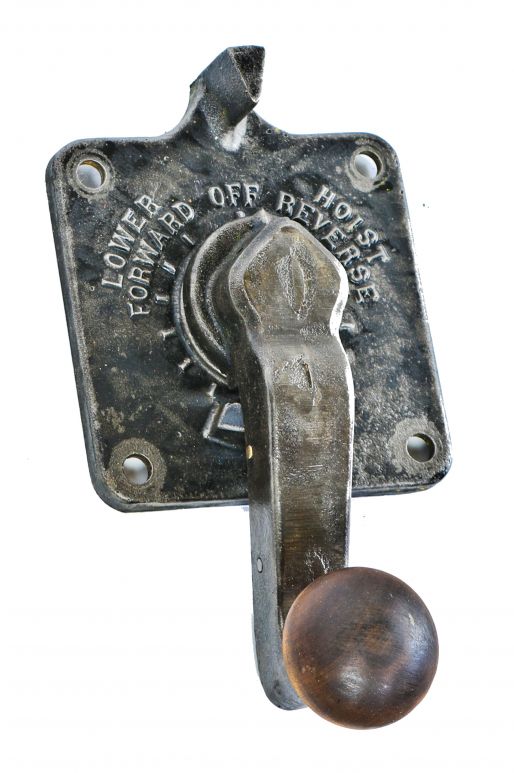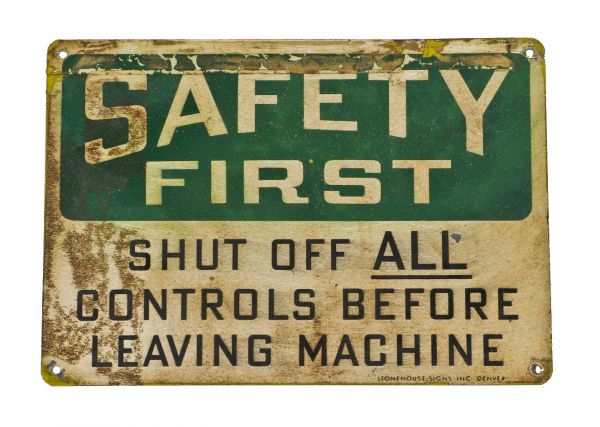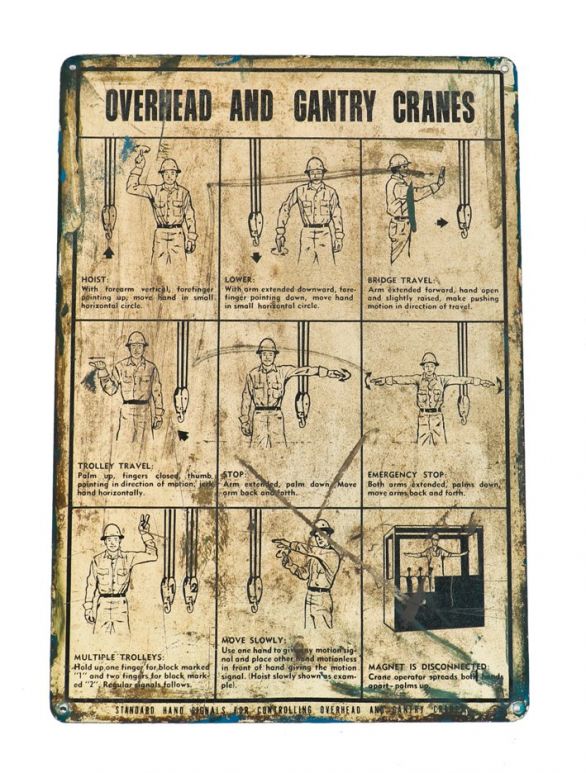original c. 1920's american antique industrial single-sided cast iron "p & h" 40-ton a. finkl & sons gantry crane manufacturer's hoist plaque
SOLD
Out of stock
SKU
UR-22273-15
pawling and harnischfeger company, milwaukee, wisc.
single-sided diminutive original cast iron 40-ton overhead a. finkl & sons foundry crane sign fabricated by or for the pawling and harnischfeger company, milwaukee, wisc. several layers of yellow paint were removed to make the lettering more distinct and visible. the brushed metal finish has been sealed with a clear coat finish. the oval-shaped plaque contains four openings for mounting purposes. the plaque was likely installed when the crane was installed sometime in the 1920's. great overall condition. p & h dates back to 1884 when two young men named alonzo pawling and henry harnischfeger embarked on a business venture in the city of milwaukee, wisc. pawling, age 26, was a chicago-born patternmaker. harnischfeger, age 28, was a german immigrant and locksmith journeyman. despite their relative youth, each had accumulated several years of experience in service to industrial manufacturing firms of various kinds by the time they began working together in 1882 for the whitehill sewing machining company in milwaukee. in 1884 pawling established his own machine and pattern shop business based on his past experience in pattern-making experience. however, he needed someone with machining experience to round out the business, so he approached his former co-worker at whitehill, henry harnischfeger, to join him as a partner. together they pooled their hard-earned assets and experiences those of pawling to found the pawling & harnischfeger machine & pattern shop on the first of december in 1884. pawling and harnischfeger moved into a poorly insulated wood-frame building at 292 florida street in milwaukee's south side "walker's point" neighborhood during a severe snowstorm on december 9th, 1884. a single pot-bellied stove in the center of the structure was the only source of heat. it was far from enough. tools and materials broke out in a cold sweat, then began to rust. every morning their little 4x6 steam engine - prime mover for their shaft-and-pulley driven machine tools - had to be thawed out before production could begin. after every snowstorm pawling and harnischfeger took turns shoveling the snow off the building's flat roof to prevent its collapse. gradually, their business began to expand, with help by milwaukee's growing knitting industry, which turned to the young craftsmen at p&h for help in the design and repair of knitting machinery. pawling and harnischfeger soon after, they were recognized for their expertise and began to attract other manufacturers for such things as file-cutting machines, stamping presses, brick-making equipment and beer-brewing equipment. the first big development for pawling and harnischfeger was their association with christopher levalley. levalley invented what he called a "link belt" and he sought the manufacturing assistance of pawling and harnischfeger. p&h made the patterns for the castings and handled the assembly of the chain for five years. using this successful start as a springboard, levalley formed chain belt company, precursor to mining conveyor manufacturer rex chain belt. in addition, pawling and harnischfeger made poppet valves for bruno nordberg for several years prior to the establishment of the nordberg manufacturing company. the two early p&h customers - chain belt and nordberg - eventually joined forces to become the mining processing equipment manufacturing firm rexnord corporation with extensive operations around the world. still another infant giant, the edward p. allis company, came to pawling and harnischfeger for pattern work before that firm became allis-chalmers. up to this point, the p&h firm was known and respected locally, but the name was seldom heard beyond the city limits, for it had no products of its own. p&h was simply a job manufacturer for products or components of products which carried other names. in 1887 an event involving edward p. allis changed the course of pawling and harnischfeger. a.j. shaw, an employee of allis, oversaw the rebuilding of a rope-driven overhead traveling bridge crane in the allis plant. the crane worked, but it was overly complicated. shaw had a better crane concept in mind. the solution was to replace the complex rope-driven mechanisms with three electric motor-driven functions, including a bridge drive, trolley drive and hoist drive. the idea was revolutionary. such a device had never been built. the finished product proved to be so far superior that pawling, harnischfeger and shaw formed a separate company to manufacture the new three-motor overhead crane. after shaw withdrew from the company, pawling and harnischfeger hired a chief engineer to design a complete line of cranes and hoisting machinery. for the first time the p&h trademark appeared in industrial plants throughout the country on this equipment. other products followed, including steam-powered engines for saw mills, steam-powered steering gears for ships, and machines for the brewing industry which were sold locally and also in england, france and holland. all carried the p&h label. although pawling and harnischfeger bought the best electric motors available for their overhead cranes, the best was not satisfactory - they were cumbersome and unreliable. knowing their customers needed greater reliability, pawling and harnischfeger explored making their own motors. to do this, however, required a great deal of specialized equipment. opportunity arrived in the early 1890's when westinghouse bought out the gibbs electric company and closed gibbs' milwaukee plant. pawling and harnischfeger acquired all of gibbs' production machinery. soon, a complete line of vastly improved electric motors bearing the p&h trademark became available for many industrial applications. and now, powered by the new p&h motors, p&h overhead cranes became even more popular. the improved p&h electric motor also led to smaller products - and bigger business. overhead cranes were used to move material weighing many tons. there was a large gap between pieces that could be safely lifted by hand and pieces that required a power-assisted mechanical device such as the overhead crane. to fill this gap, p&h developed an electric hoist capable of lifting one or two tons. a p&h motor provided the lifting force. a hand-operated chain drive, tracking along a simple i-beam, provided the travel function. the idea was so well accepted that pawling & harnischfeger decided in 1902 that they needed to expand their manufacturing operations to accommodate their growing business. when fire destroyed their foundry building on april 15, 1903, they were forced to put that plan into action by acquiring a 26-acre manufacturing site located "out in the country" at 4400 west national avenue. in 1911, ill health forced alonzo pawling to dissolve the partnership that started with a handshake - a handshake that set in motion a business that would become an industry-leading supplier of powerful, productive and reliable construction and mining equipment. shortly after pawling retired and sold his interest to henry harnischfeger, the name of the business was changed to harnischfeger corporation.
You Might Also Like
WORDLWIDE SHIPPING
If required, please contact an Urban Remains sales associate.
NEW PRODUCTS DAILY
Check back daily as we are constantly adding new products.
PREMIUM SUPPORT
We're here to help answer any question. Contact us anytime!
SALES & PROMOTIONS
Join our newsletter to get the latest information

